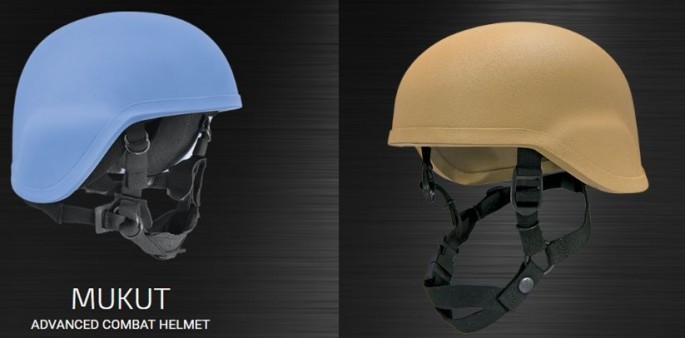The Indian Army has at last gotten around to equipping its downtrodden jawans with a modern combat helmet that can stop shell fragments and 9 mm pistol rounds fired at close range.
The army has signed a contract with Indian defense contractor MKU Industries based in Kanpur in Uttar Pradesh State for the supply of 158,000 of the new helmets, which will be made from Kevlar or another para-aramid fiber used to make bullet resistant gear.
The contract price is $26.4 million with each helmet costing some $160. By comparison, a brand new U.S. Army advanced combat helmet costs over $200 each.
This is the first large order for helmets by the Indian Army in over two decades.
The army's standard helmet is the indigenous Model 1974 helmet, which is made from composite fiberglass material that is in no way bullet resistant. On the other hand, the army's Parachute Regiment use the Israeli-made OR-201 helmet made from GRP (Glass Reinforced Plastic). These lightweight helmets can stop a 9 mm round at close range.
Delivery of the first of the new Indian Army helmets is expected this August with complete delivery to take place over the next three years. There are 1.2 million active personnel in the Indian Army and the contract for only 158,000 helmets is seen as an initial order to protect troops along the deadly Line of Control with Pakistan.
The army said the new helmet is designed to withstand the impact of a 9 mm round fired from 20 meters away. It will also stop some shell fragments.
Like other Kevlar helmets in use by armies worldwide, the new Indian Army helmet will not stop penetration by a high velocity assault rifle round such as the 7.62 x 39 mm fired by the Chinese-made Type 56 assault rifle (an AK-47 clone) that is the standard weapon of the Pakistan Army.
The helmet, however, will slow down the bullet enough to decrease its killing power, especially if the round is fired from long range.
The Indian Army didn't specify the exact type of helmet it's buying from MKU. The company's website, however, reveals it only makes two kinds of ballistic helmets.
The first, which is called the Mukut combat helmet, is a ballistic helmet that looks similar to the standard Kevlar helmet worn by some units of the Indian Army and many armies worldwide. The second helmet, the Mukut Advanced Combat Helmet, however, is a far more different design that protects more of the neck area.
MKU says both helmets are manufactured using its RHT (Reduced Helmet Trauma) technology that provides protection from bullets and fragments and reduces head and skull injuries.
The technology also reduces the resultant trauma, arising due to BABT (Behind Armor Blunt Trauma), by over 40 percent as compared to standard conventional composite helmets, according to the tests conducted by HP White Laboratory in the United States.
MKU said trauma caused by bullets and fragments have long been a concern among armed forces worldwide as the symptoms and aftermath of trauma related injuries surface long after they have occurred and stay for lifetime with the affected soldier.



























